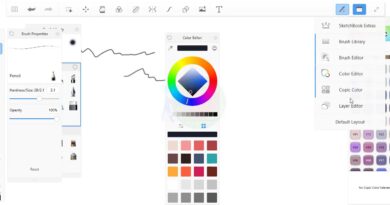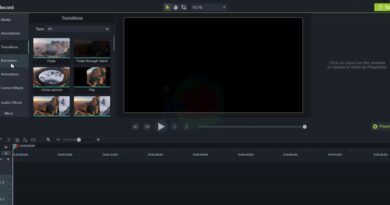Complete Steps of creating 2D and 3D Animated Video and Games
Complete Steps of creating 2D and 3D Animated Video and Games.
Contents
- 0.1 Complete Steps for Creating 2D & 3D Animated Videos and Games
- 0.2 Part 1: Creating a 2D or 3D Animated Video
- 0.3 Pre-Production (Planning & Concept)
- 0.4 Production (Animation & Graphics)
- 0.5 Post-Production (Rendering & Editing)
- 0.6 Part 2: Creating a 2D or 3D Game
- 0.7 Game Planning & Design
- 0.8 Game Development
- 0.9 Testing & Optimization
- 0.10 Game Publishing & Marketing
- 0.11 Tools & Software Used
- 0.12 Complete Steps of creating 2D and 3D Animated Video and Games
- 0.13 Getting Started with 3D Game Animation
- 1 🎞️ Steps to Create a 2D/3D Animated Video
- 2 🎮 Steps to Create a 2D/3D Game
- 3 🛠️ Recommended Tools
Complete Steps for Creating 2D & 3D Animated Videos and Games
Creating 2D & 3D animated videos and games requires a structured workflow, from planning to final output. Below is a step-by-step guide covering both animation and game development processes.
Part 1: Creating a 2D or 3D Animated Video
(Animation for Movies, Advertisements, or YouTube Videos)
Pre-Production (Planning & Concept)
Idea & Script – Develop a story or concept.
Storyboarding – Create a visual sequence of key scenes.
Character Design – Sketch characters, environments, and assets.
Voice Acting & Sound Design – Record voiceovers and sound effects.
Production (Animation & Graphics)
For 2D Animation:
Frame-by-frame animation (e.g., Adobe Animate, Toon Boom)
Cut-out animation (e.g., Moho, After Effects)
Rigging & Motion Tweens (e.g., Spine for character animation)
For 3D Animation:
Modeling – Create 3D objects (e.g., Blender, Maya, 3ds Max)
Texturing & Shading – Add colors & materials
Rigging & Skinning – Add bones for movement
Animation & Camera Setup – Animate characters & scenes
Post-Production (Rendering & Editing)
Rendering – Export animation frames with lighting & effects
Editing – Add effects, transitions, and sync audio (Premiere Pro, After Effects)
Music & Sound Effects – Enhance storytelling with sound
Part 2: Creating a 2D or 3D Game
(Game Development for PC, Mobile, or Consoles)
Game Planning & Design
Concept & Game Idea – Define gameplay mechanics & objectives
Game Design Document (GDD) – Detailed plan of game elements
Art Style & Assets – 2D sprites or 3D models
Game Development
For 2D Games:
Sprites & Animations – Create characters & objects (e.g., Photoshop, Aseprite)
Game Engine Selection – Unity, Godot, Construct, etc.
Coding & Scripting – Program interactions (C# in Unity, GDScript in Godot)
For 3D Games:
3D Modeling – Blender, Maya, or 3ds Max
Level Design – Build environments (Unity, Unreal Engine)
Physics & Mechanics – Program AI, movement & interactions
Testing & Optimization
Bug Fixing & Debugging – Remove errors
Performance Optimization – Reduce lag & improve smoothness
User Testing – Playtest and gather feedback
Game Publishing & Marketing
Export Game – Build for PC, Mobile, or Console
Marketing & Launch – Promote on social media, Steam, Play Store
Tools & Software Used
2D Animation: Adobe Animate, Toon Boom Harmony, Moho
3D Animation: Blender, Maya, 3ds Max
2D Game Development: Unity (C#), Godot (GDScript), Construct
3D Game Development: Unreal Engine (Blueprints), Unity (C#)
Want help choosing software or learning a specific step? Let me know!
Complete Steps of creating 2D and 3D Animated Video and Games
Getting Started with 3D Game Animation
Creating 2D/3D animated videos and games involves several stages, from concept to deployment. Here’s a complete step-by-step breakdown of each process.
🎞️ Steps to Create a 2D/3D Animated Video
1. Pre-Production
-
Concept Development: Define the story, message, and goals.
-
Scriptwriting: Write the dialogue and scenes.
-
Storyboarding: Visual representation of scenes (like a comic strip).
-
Character & Environment Design: Sketch characters, props, and backgrounds.
-
Animatic: A rough video combining storyboard with voice & timing.
2. Production
-
Modeling (3D only): Create 3D characters/environments using tools like Blender, Maya.
-
Rigging: Add bones to models for movement.
-
Texturing & Shading: Apply colors, materials, and surface detail.
-
Animation: Move characters and objects frame by frame (2D: frame-by-frame/digital rigs; 3D: keyframes or motion capture).
-
Lighting: Setup scene lighting for mood and realism.
-
Rendering: Generate final frames or video (this takes the most time in 3D).
3. Post-Production
-
Compositing: Combine animation with effects or background.
-
Sound Design: Add voice-over, sound effects, and music.
-
Editing: Final cut and visual adjustments.
-
Exporting: Output to desired format (MP4, MOV, etc.).
🎮 Steps to Create a 2D/3D Game
1. Pre-Production
-
Game Idea & Genre: Define what type of game (e.g., platformer, FPS).
-
Story & Characters: Write story, define characters and levels.
-
Game Design Document (GDD): Blueprint of the game mechanics, UI, levels, etc.
2. Production
-
Art Design:
-
2D: Sprites, tilesets, UI elements.
-
3D: Models, animations, environments.
-
-
Programming:
-
Use engines like Unity, Unreal Engine, or Godot.
-
Code gameplay logic, AI, physics, inputs, and UI.
-
-
Sound Design: Music, voiceovers, effects.
3. Testing
-
Alpha/Beta Testing: Internal and external testers identify bugs.
-
Debugging: Fix bugs, optimize performance.
4. Publishing
-
Build the Game: Export to platform (PC, mobile, console).
-
Distribution: Release on stores like Steam, Play Store, App Store.
-
Marketing: Promote via social media, trailers, and influencer outreach.
🛠️ Recommended Tools
| Task | 2D Animation | 3D Animation | Game Development |
|---|---|---|---|
| Drawing/Design | Photoshop, Krita | Blender, Maya | Unity, Unreal Engine |
| Animation | Toon Boom, Moho | Blender, Cinema 4D | Godot, GameMaker |
| Sound Editing | Audacity, FL Studio | Audacity, Reaper | FMOD, Wwise |
| Scripting | Notepad++, VS Code | Visual Studio | C#, C++, GDScript |
Would you like a workflow diagram, sample storyboard, or recommended software list to go further?



